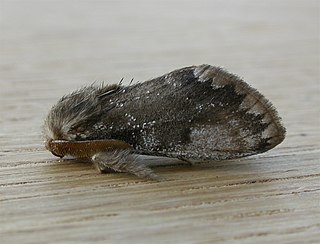
Euproctis marginalis, the margined browntail moth, is a moth of the family Erebidae. The species was first described by Francis Walker in 1855. It is found in Australia, including Tasmania.

Euproctis is a genus of tussock moths in the family Erebidae described by Jacob Hübner in 1819. Species are cosmopolitan, widespread throughout Palearctic, African, Oriental and Australian regions. Molecular phylogenetic studies indicate that the genus as presently understood comprises a large number of unrelated lineages, only a few of which have names, and is therefore in serious need of revision.
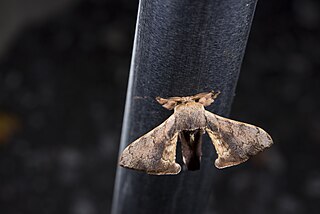
Trilocha varians, the Greenish silk-moth is a moth in the family Bombycidae described by Francis Walker in 1855. It is widespread in the Oriental region from India, Sri Lanka, China, extending to Taiwan, the Philippines, Pakistan, Sulawesi and Java.
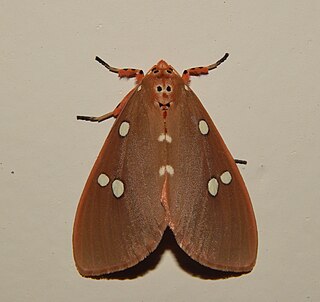
Tinolius eburneigutta is a moth of the family Erebidae first described by Francis Walker in 1855. It is found in India, Sri Lanka, and Thailand.
Aroa plana is a moth of the family Erebidae first described by Francis Walker in 1855. It is found in India and Sri Lanka. The caterpillar is known to feed on Bambusa species.
Aroa subnotata is a moth of the family Erebidae first described by Francis Walker in 1855. It is found in Sri Lanka.
Artaxa angulata is a moth of the family Erebidae first described by Shōnen Matsumura in 1927. It is found in Taiwan, Myanmar, India, Pakistan, Sri Lanka, Malaysia, Singapore and Indonesia.
Lacida costalis is a moth of the family Erebidae first described by Francis Walker in 1855. It is found in Sri Lanka.
Sphrageidus xanthorrhoea is a moth of the family Erebidae first described by Vincenz Kollar in 1848. It is found in India, Sri Lanka, Java and Indonesia. It was once classified under the genus Euproctis, where it is accepted by some authors.
Euproctis bimaculata is a moth of the family Erebidae first described by Francis Walker in 1855. It is found in India, Sri Lanka and Thailand.
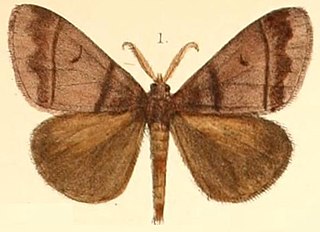
Euproctis cervina is a moth of the family Erebidae first described by Frederic Moore in 1877. It is found in Sri Lanka.
Euproctis fraterna is a moth of the family Erebidae first described by Frederic Moore in 1883. It is found in the Maldives, India, Sri Lanka and the Seychelles.
Euproctis fulvipuncta is a moth of the family Erebidae first described by George Hampson in 1893. It is found in India and Sri Lanka.
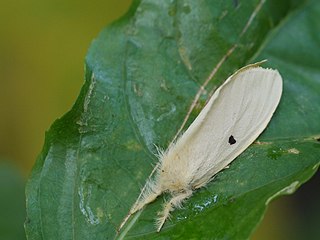
Euproctis lunata, the castor hairy caterpillar, is a moth of the family Erebidae. The species was first described by Francis Walker in 1855. It is found in India, Pakistan, Sri Lanka and Thailand.

Euproctis latifascia is a moth of the family Erebidae first described by Francis Walker in 1855. It is found in India, Sri Lanka and Taiwan.
Euproctis rhoda is a moth of the family Erebidae first described by Frederic Moore in 1879. It is sometimes classified as a subspecies of Euproctis howra. It is found in India, Sri Lanka, Myanmar, the Andaman Islands and Australia.
Euproctis semisignata is a moth of the family Erebidae first described by Francis Walker in 1865. It is found in India and Sri Lanka.
Orgyia viridescens is a moth of the family Erebidae first described by Francis Walker in 1855. It is found in Sri Lanka.
Lymantria grandis is a moth of the family Erebidae first described by Francis Walker in 1855. It is found in Sri Lanka.
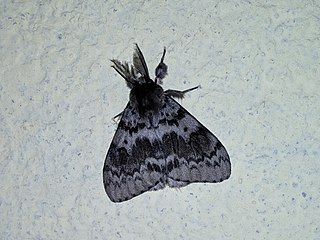
Lymantria incerta is a moth of the family Erebidae first described by Francis Walker in 1855. It is found in India and Sri Lanka.








